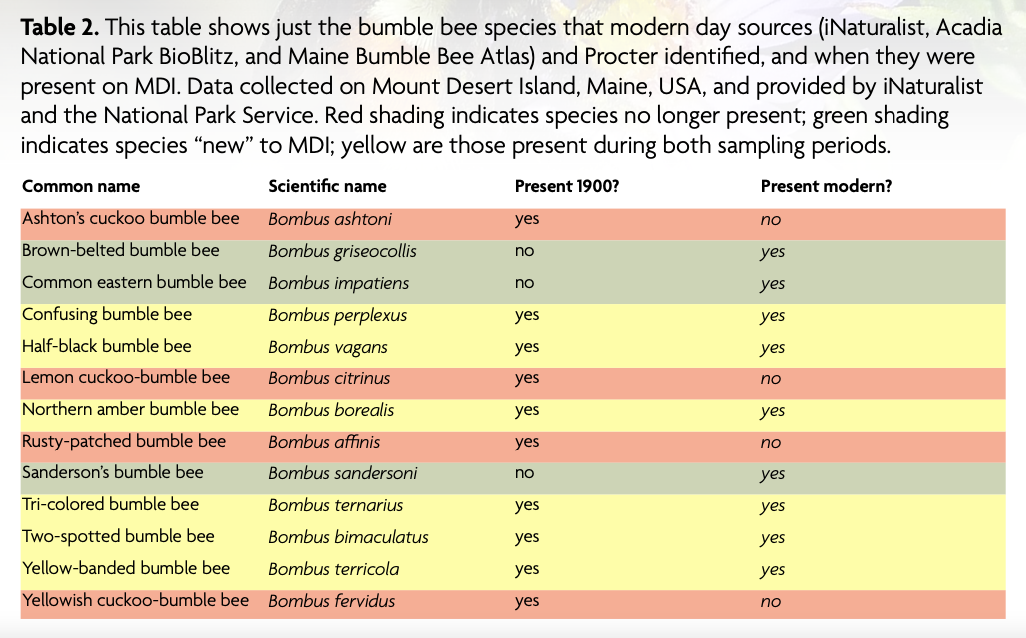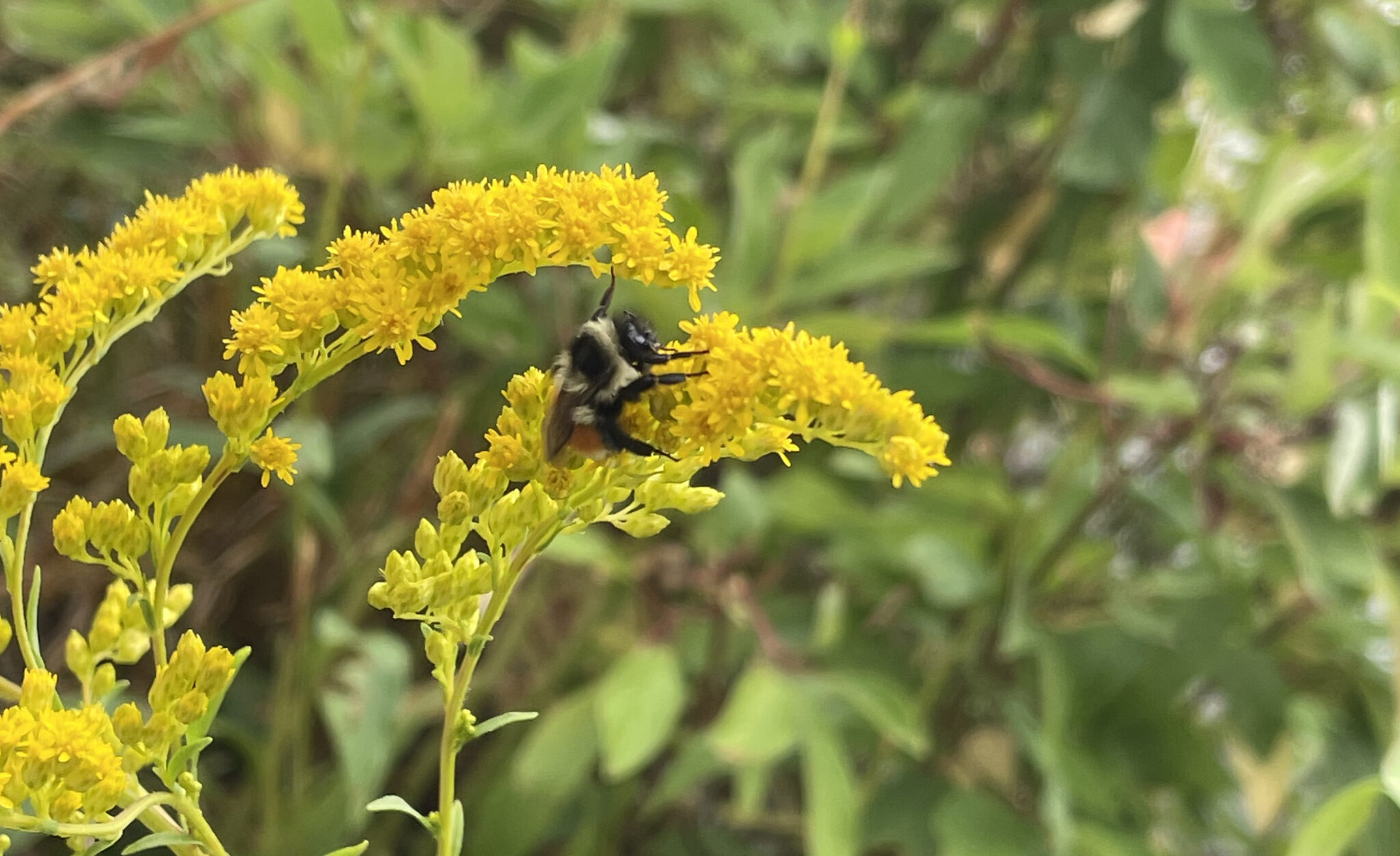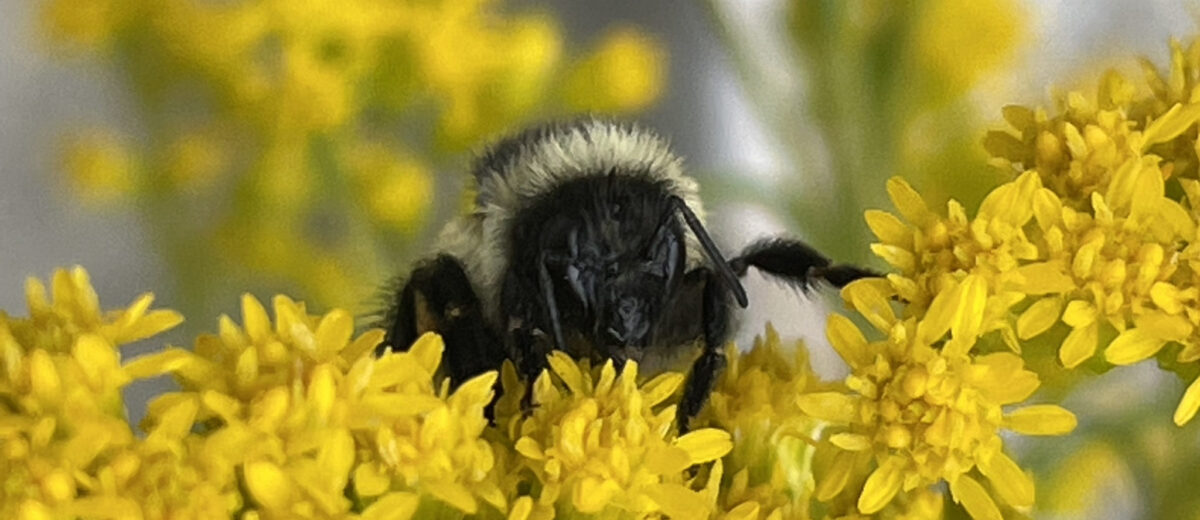by Jess Moskowitz
Bees! They are some of nature’s hardest workers, facilitating pollination for the majority of flowering plants around the world. Bees are crucial to both unmanaged plant communities and agricultural systems alike. Globally, agricultural systems remain largely dependent on wild native bees. Diverse and healthy wild native bee populations are vital to maintaining stable ecological systems.
Pollinators are the base of our food systems and ecosystems, but globally pollinator populations are declining. This decline is attributed to an array of factors, including increased pesticide use, numerous pathogens, and more severe heat-stress events. Bumble bees are among our most important pollinators and most sensitive to stressors.
Maine is presently home to 13 species of bumble bee. In the past 20 years, bumble bee populations in Maine have been in decline. To help monitor and understand this decline, volunteers with The Maine Bumble Bee Atlas have been working to compile historic records and gather data on the current presence and distribution of bumble bee species across the state of Maine. Of the 17 species of bumble bee historically found in Maine, four species are no longer found here. This work to synthesize the changes in bumble bee populations is essential to understanding how to support these populations, but the historic data sets that are needed to do this work are often rare, incomplete, or non-existent.

Here in Acadia National Park, we are fortunate to have the records of William Procter and other twentieth-century naturalists to serve as a local bee diversity baseline. Examining these historical records in comparison with modern day sources, the Landscape of Change project has compiled a list of the bumble bee species that have been previously and currently found in Acadia. This comparison can provide insight into the changes in bumble bee populations over the past century in Acadia National Park. Here on the Schoodic Peninsula, the Schoodic Signals project is investigating the current abundance and diversity of bumble bee populations by compiling iNaturalist observations of bumble bee species.
As of November 1st, participants in the Schoodic Signals iNaturalist project have contributed 195 observations of individuals in the genus Bombus, 85 of which have been identified as tricolored bumble bees (Bombus ternarius). Tricolored bumble bees are by far the most plentiful of the nine bumble bee species that have been documented so far in the Schoodic Signals project. Tricolored bumble bees are a ground-nesting “eusocial”species: their social structure is defined by a single reproductive queen and cooperative brood care, with labor divided by reproductive and non-reproductive individuals. These bees, which range throughout the Northeast, are known to visit blooms of brambles, milkweeds, and goldenrods, which are plentiful during the late summer and fall. These bumble bees, along with many other nectar-loving insects, help ensure that Acadia’s wild flowers will bloom for years to come.

Since bumble bees have been historically well studied, they can act as an indicator species, signaling general declines in bee populations. Tracking bumble bees can also enable land managers to make informed decisions when it comes to conservation actions, such as maintaining foraging habitat or limiting pesticides.
This time of year a bumble bee is a rare sight, as next year’s queens have begun their winter hibernation and the season’s workers and drones have completed their life cycles. When warm temperatures arrive next spring, hungry queens will emerge and begin laying the season’s brood. Come springtime, you can help support the Schoodic Signals project by snapping a picture when you see foraging bumbles, and sharing this observation on iNaturalist.
References:
Potts, S. G., Biesmeijer, J. C., Kremen, C., Neumann, P., Schweiger, O., & Kunin, W. E. (2010). Global pollinator declines: trends, impacts and drivers. Trends in Ecology & Evolution, 25(6), 345–353. https://doi.org/10.1016/j.tree.2010.01.007
Schmitt, C., Lima, K., Benz, S., & Nelson, P. (2022). Landscape of Change – Year 1 Final Report (p. 28). Retrieved from https://schoodicinstitute.org/wp-content/uploads/2022/06/Landscape-Of-Change-Final-6.30.22-OPT.pdf
Soroye, P., Newbold, T., & Kerr, J. (2020). Climate change contributes to widespread declines among bumble bees across continents. Science, 367(6478), 685–688. https://doi.org/10.1126/science.aax8591
